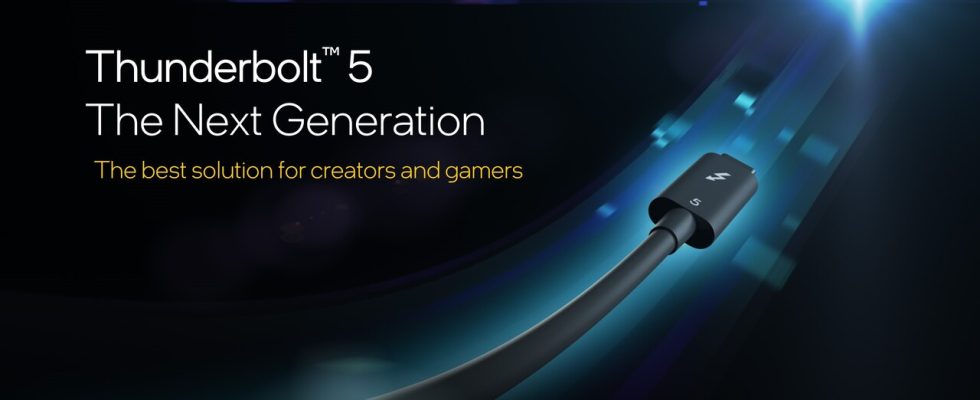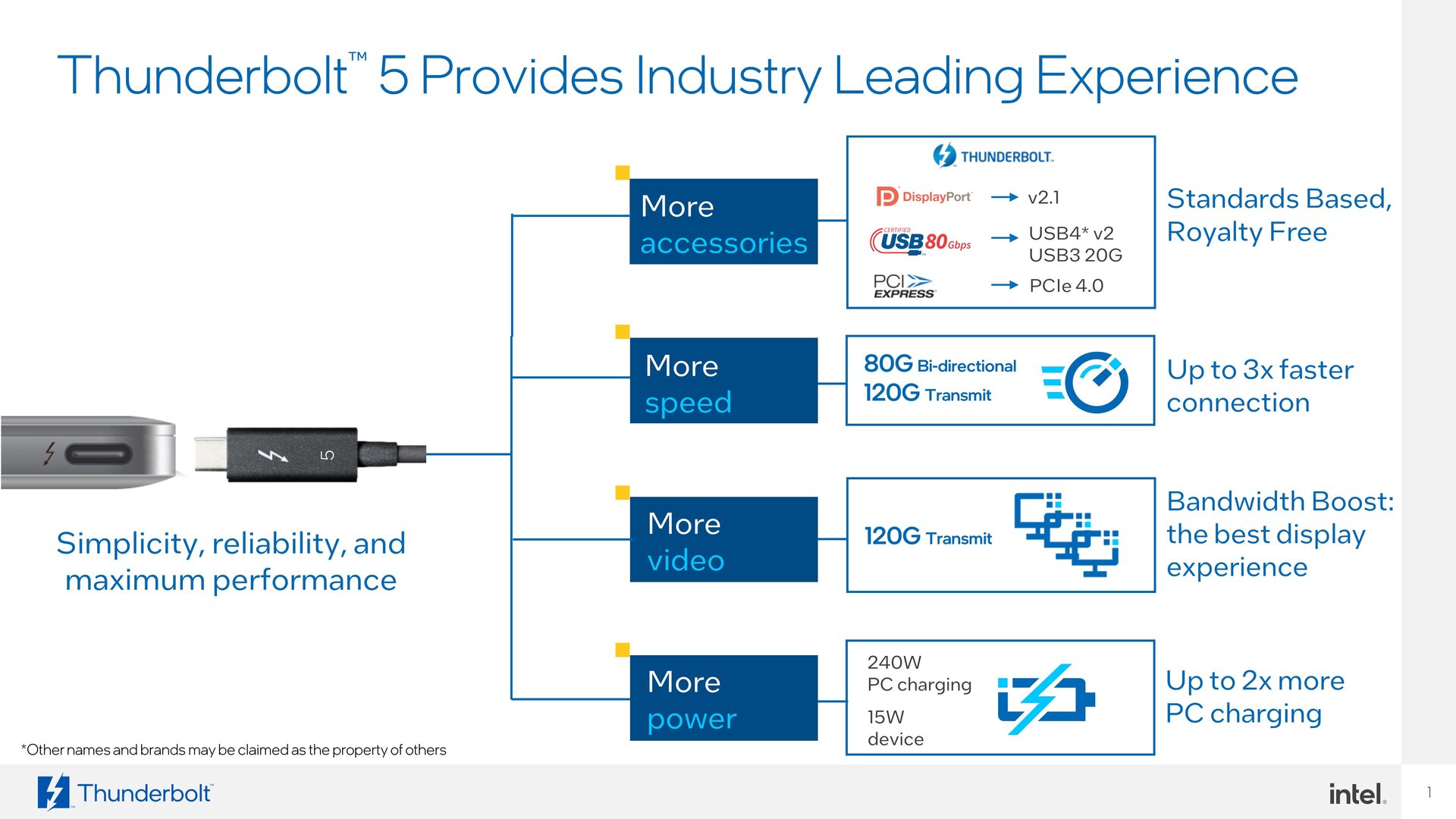Intel Thunderbolt 5 is here – at least on paper. The universal interface follows on from part 4 and aims to be the better USB 4.0. The standard shares many of USB 4.0’s achievements, but simply makes them mandatory, while USB remains confusing with its many optional options.
Intel Thunderbolt has become a success story with the last two generations at the latest. Initially, the interface protocol that combines PCI Express and DisplayPort was considered as an optical connection technology under the code name Light Peak. But the debut took place at the beginning of 2011 with a step back to reality and classic copper cables and the product name Thunderbolt. With each generation it got a little better and more socially acceptable and this was also announced for “Thunderbolt Next” a year ago.
Thunderbolt 5’s maximum throughput doubles that of Thunderbolt 4 to 80 Gbps in each direction (bidirectional). Recently, there has also been a kind of turbo boost: a maximum of 120 Gbit/s can be transmitted in the sending direction, but the receiving direction is then limited to 40 Gbit/s.
Thunderbolt 5 at a glance
The technical details of Thunderbolt 5 are as follows.
Ultimately, USB 4 isn’t as bad as the diagram makes it seem at first glance – after all, Thunderbolt is also based on USB 4.0 and its new PAM-3 technology. USB 4.0 can also do a lot, but the problem is that a lot of it is only optional. A lot of things can, but nothing has to – and that’s where the problems often start. Thunderbolt sells itself as a premium solution because it simply requires the things that are optional with USB 4 as a prerequisite. However, the fact that USB 4 v2 can deliver up to 240 watts and 80 Gbit/s of data or even more is a different story, as Intel’s diagrams make clear.
Not everyone needs the high data rates and power delivery of up to 240 watts, which is why Intel is primarily focusing on the target group of gamers and creators with Thunderbolt 5 – that was always the start with the last generations. Both high resolutions for screens with up to 8K and fast refresh rates of up to 540 Hz are required there.
When it comes to cables and labels, Intel continues to follow the familiar path. There is only one cable, no compromises. Relevant certifications and programs continue to run as usual and have been improved in some cases. As Intel explained when asked by ComputerBase, certified cables for Thunderbolt 4 should normally work without any problems even with the new connection. But there will also be new cables, recognizable by a small “5”.
The usual lengths have hardly changed; the simple passive cables must meet the standards up to a length of at least one meter; beyond that, cables with redriver chips are used; 2 meters and more are being considered. As in the past, these are very expensive in stores or extremely expensive like Appleofficially costs for example A current Thunderbolt 4 redriver from Intel only costs 1 US dollar.
Starting in 2024, initially as a discrete chip
However, a start this year is no longer planned; it will not take place until 2024. Although the hardware is already running in the laboratory and at partners, it still takes some time until the final silicon is available, explained Intel, which is why no data on TDP and other things were revealed.
First, as in the past, Thunderbolt 5 will be implemented using a small additional chip, called “Barlow Ridge” in Thunderbolt 5. It will probably be found on mainboards first. Intel emphasizes that these chips can also be used by AMD or Arm; after all, it is simply controlled via PCI Express 4.0.
Integrated solutions may be available by the end of 2024. Meteor Lake, the new CPU this year, is once again relying on Thunderbolt 4, and the successor Arrow Lake or Lunar Lake may then integrate Thunderbolt 5 natively.
ComputerBase received information about this item from Intel under NDA. The only requirement was the earliest possible publication date.





